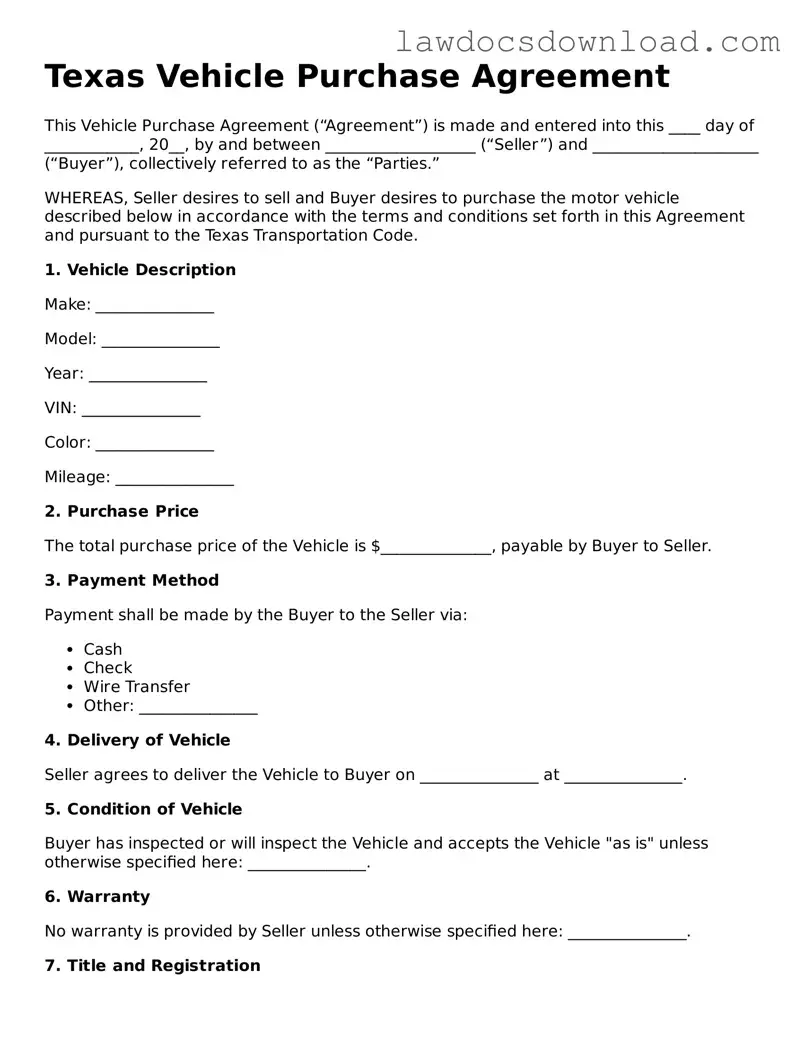Texas Vehicle Purchase Agreement
This Vehicle Purchase Agreement (“Agreement”) is made and entered into this ____ day of ____________, 20__, by and between ___________________ (“Seller”) and _____________________ (“Buyer”), collectively referred to as the “Parties.”
WHEREAS, Seller desires to sell and Buyer desires to purchase the motor vehicle described below in accordance with the terms and conditions set forth in this Agreement and pursuant to the Texas Transportation Code.
1. Vehicle Description
Make: _______________
Model: _______________
Year: _______________
VIN: _______________
Color: _______________
Mileage: _______________
2. Purchase Price
The total purchase price of the Vehicle is $______________, payable by Buyer to Seller.
3. Payment Method
Payment shall be made by the Buyer to the Seller via:
- Cash
- Check
- Wire Transfer
- Other: _______________
4. Delivery of Vehicle
Seller agrees to deliver the Vehicle to Buyer on _______________ at _______________.
5. Condition of Vehicle
Buyer has inspected or will inspect the Vehicle and accepts the Vehicle "as is" unless otherwise specified here: _______________.
6. Warranty
No warranty is provided by Seller unless otherwise specified here: _______________.
7. Title and Registration
Seller agrees to provide Buyer with a valid title and registration of the Vehicle, free and clear of any liens or encumbrances.
8. Legal and Binding Agreement
This Agreement is legal and binding between the Parties as stated above. Any modifications to this Agreement must be made in writing and signed by both Parties.
9. Governing Law
This Agreement shall be governed by and construed in accordance with the laws of the State of Texas.
10. Signatures
IN WITNESS WHEREOF, the Parties hereto have executed this Agreement.
Seller's Signature: _____________________ Date: _______________
Buyer's Signature: _____________________ Date: _______________
